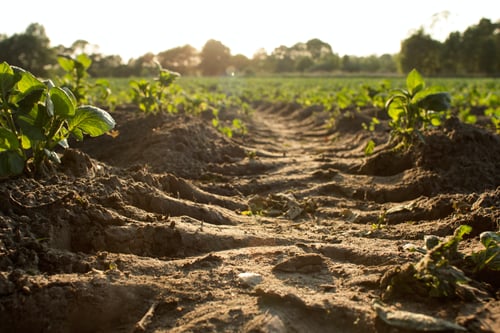Insights
Looking to the Past to Improve Farming’s Future
 It’s been said that wisdom comes with age and that history repeats itself. According to these adages, it’s no surprise that modern growers are looking to the past to face today’s agricultural challenges. Concerns about the environment, erosion, and climate change have resulted in increased interest in age-old organic and sustainable farming practices and fostered a resurgence in the use of some of these tried and true tactics.
It’s been said that wisdom comes with age and that history repeats itself. According to these adages, it’s no surprise that modern growers are looking to the past to face today’s agricultural challenges. Concerns about the environment, erosion, and climate change have resulted in increased interest in age-old organic and sustainable farming practices and fostered a resurgence in the use of some of these tried and true tactics.
Crop rotation and intercropping are two of the most commonly used ancient farming techniques. Both of these practices ultimately improve soil health and increase yield, while decreasing or eliminating the need for chemical fertilizers, herbicides, and pesticides. These ancient practices remain viable and commercially successful across the globe. Here’s an overview of both:
Crop Rotation
Crop Rotation involves planting different crops sequentially over time on the same field or plot of land. According to Wikipedia.com, crop rotation has been used in farming for thousands of years. There is evidence of crop rotation dating back to 6,000 B.C. in Western Asia, Turkey, and Egypt, as well as biblical references in the Book of Leviticus instructing ancient farmers to rest the land between plantings.
Modern sustainability resources including The Rodale Institute and The Permaculture Research Institute recognize that this ancient practice greatly improves soil health and minimizes the presence of disease, pests and weeds when compared to monoculture models.
Monoculture crops planted repeatedly in the same fields year in and year out lead to soil depletion and create a dependency on chemical fertilizers, as well as overuse of herbicides and pesticides. The repeated use of one crop also invites repeated cycles of disease and pest and weed infestations.
Crop rotation replenishes the soil structure by increasing diversity of plant debris in the soil and eliminates repeated plant vulnerabilities from year to year. Resilience.org reports that enhanced soil structure increases the ability to store carbon in the soil, thus impacting global warming.
As an added benefit, when using pulse crops in a rotation, nitrogen-fixing bacteria in the roots improve soil health and eliminate the need for synthetic nitrogen fertilizer altogether.
Rodale reports that crop rotation can range from simple 2-3 crop combinations to more elaborate and complex rotations involving up to a dozen or more different plants. Success of crop rotation depends on climate, soil characteristics and quality, crop type, market demands and the knowledgeable and thorough planning of the rotation balance.
Permaculturenews.org adds that cycling through different cash, cover, and pulse crops from year to year also offers additional advantages including:
- Erosion control through improved soil structure and reduced exposure to wind and water.
- Improved biodiversity by attracting a variety of beneficial pollinating insects and creating a more diverse soil residue which fosters a healthier microbial population.
- Reduced commercial risk as crop variety extends the growing season and minimizes particular crop susceptibility to certain types of weather.
- Increased yield based on the collective benefits listed above.
Intercropping
Intercroppping (also known as mixed cropping or co-cultivation) involves planting more than one species in the same field or plot to improve soil health and combat disease, pests, and weeds. According to Teralytic.com, thousands of years ago indigenous farmers in Central and South America used a planting strategy called the Three Sisters using maize, beans and squashes. This system used tall maize stalks to act as a trellis to support the bean vines. The bean plants, in turn, allowed for soil enrichment through nitrogen fixation at the root level. Surrounding the maize and bean bases with broad leafed squash provided ground shade, enabled water conservation, prevented erosion, and suppressed weeds. The arrangement benefitted plants and consumers alike.
The practice of intercropping varies greatly from today’s large scale homogenous monocultural farming practices. It can be adapted to current crops in different regions on a larger scale with wider plantings adapted for mechanized harvest. Permaculturenew.org reports that plants can be arranged in rows, strips, in mixed arrangements with more clustered groupings, or in relay formation where flowering and harvest times vary. Benefits of intercropping are similar to crop rotation and include weed suppression, resistance to pests and diseases, improvement of soil structure, balancing fertility, and providing nitrogen in the soil through the nitrogen-fixing process. As with crop rotation, the practice is not without management and maintenance challenges.